An Asheville photographer had rare access to remote Tibetan monasteries this summer and will exhibit images from his journey beginning today, Thursday, Dec. 4.
Taylor Taz Johnson trekked through the Himalayan mountains of South Asia with Dr. Hun Lye, the founder of Asheville’s Urban Dharma Buddhist Center. They were granted unprecedented permission to photograph inside some of the most isolated religious institutions in the world, braving military interrogations along the way.
A highlight of the trip “was experiencing the richness of beauty inside the monasteries and nunneries. Every aspect of everything was designed, sculpted and painted in a strikingly beautiful way,” says Johnson. “I’ve never experienced anything like that before. Combine that visual beauty with the sound of chanting and the smell of incense and burning butter candles, and combine that with the history of what has happened there and you get a depth of richness that is pretty much indescribable.”
The photos will eventually be featured in a book with the goal of sharing information about the Drikung Kagyu lineage of Tibetan Buddhism with the rest of the world. In the meantime, Johnson will talk about his experience at Urban Dharma at 8 p.m. on Dec. 4. Ahead of that event, Johnson shared some of his photos and stories with Xpress:
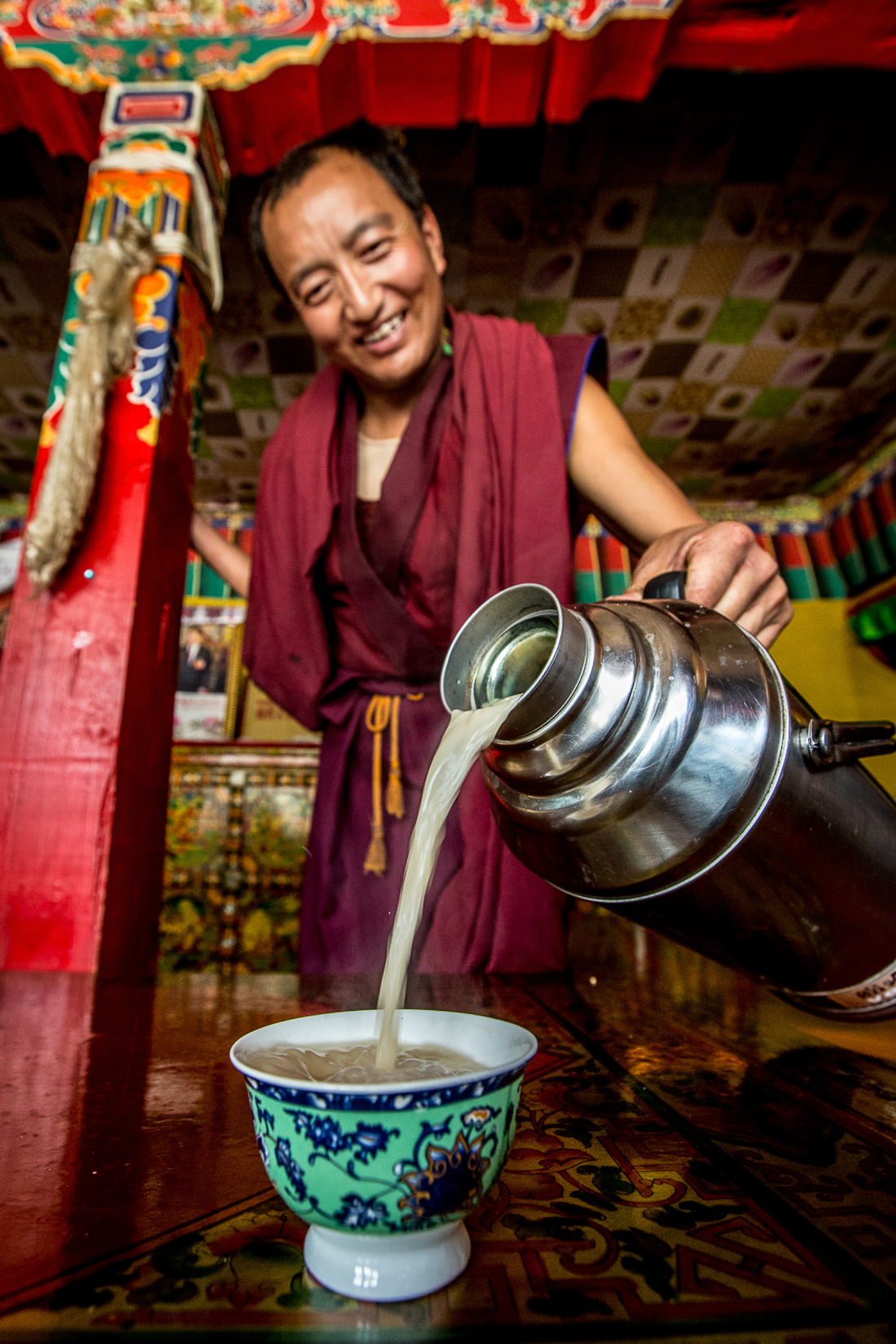
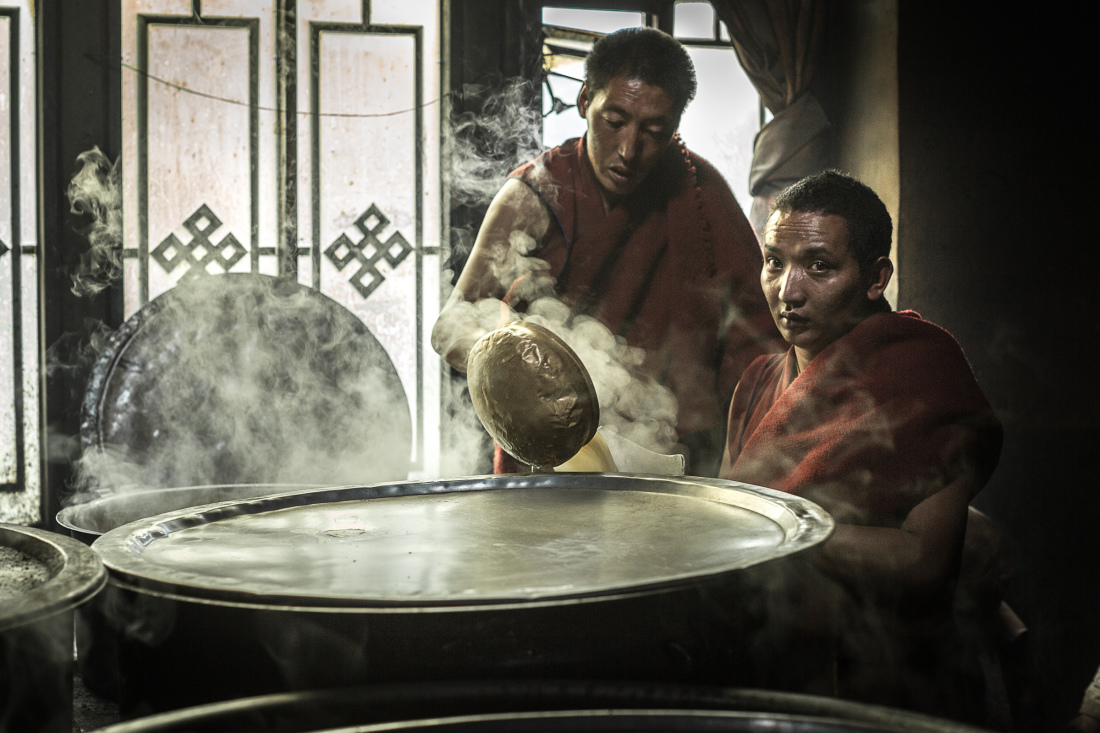
Mountain Xpress: What were some of the challenges of photographing such remote locations?
Johnson: There were more challenges than one might expect. … The first challenge that comes to mind is the presence of the Chinese police and military. Some of the monasteries we visited were so far from any hotel or place to stay that we had to camp. And every place we camped, the Chinese police drove up into the middle of our camp, and questioned our guides with intimidating intensity. “What are you doing here? Why are you here? Who are the people you are guiding? Why are they here?” Their tone was always accusatory and threatening.
We were held longer than usual at police checkpoints, and the checkpoints are everywhere in Tibet. They’re impossible to avoid because the roads have been augmented to incorporate these checkpoints into the road design. These checkpoints are now permanent parts of the roads – like tolls on some of our major highways.
Every monastery we visited had a newly built police station immediately next to it. You had to drive in front the police station to reach the monastery. At one monastery’s police station, we were held and questioned at the gate, while one of the police boarded our bus and took close up photos of all of us with a professional camera for documentation while another officer stood just outside the bus with an automatic rifle.
At one of the police checkpoints a military member came onto our bus with his automatic rifle at his side, and stared at us while he talked to our guide.
The interesting part of all of this is that the authorities focused almost all of their intensity and intimidation at our guides. I learned that with visitors such as us, it was the people who we visited and interacted with that we put at risk. As an American, it was very unlikely that anything bad would have happened directly to me. That was a strange feeling… and it still is. Everyone we interacted with closely (except the police and military) was happy and grateful that we were there, and they simultaneously knew that at some level they were endangering themselves in interacting with us. People are watched very closely in Tibet.
In some situations we had to act with this in mind – one evening we had to stagger our arrival times with the people we were meeting at a restaurant. We couldn’t be seen together in public… We sat together in the back semi-hidden corner of the restaurant, and when they left, we waited another 30 minutes before we left.
I’ve been to many countries, some of which are [developing nations], but never before have I experienced a country whose entire culture is being systematically destroyed. Aside from that, one of the other challenges we faced the entire trip was the extreme altitude. We didn’t acclimate as we were only there for two weeks. It was the kind of elevation that a few times when rolled over in bed in the middle of the night, I had to catch my breath. That was a strange and slightly disconcerting feeling. One of the monasteries we went to was somewhere around 15,000 feet – walking up stairs was intense.
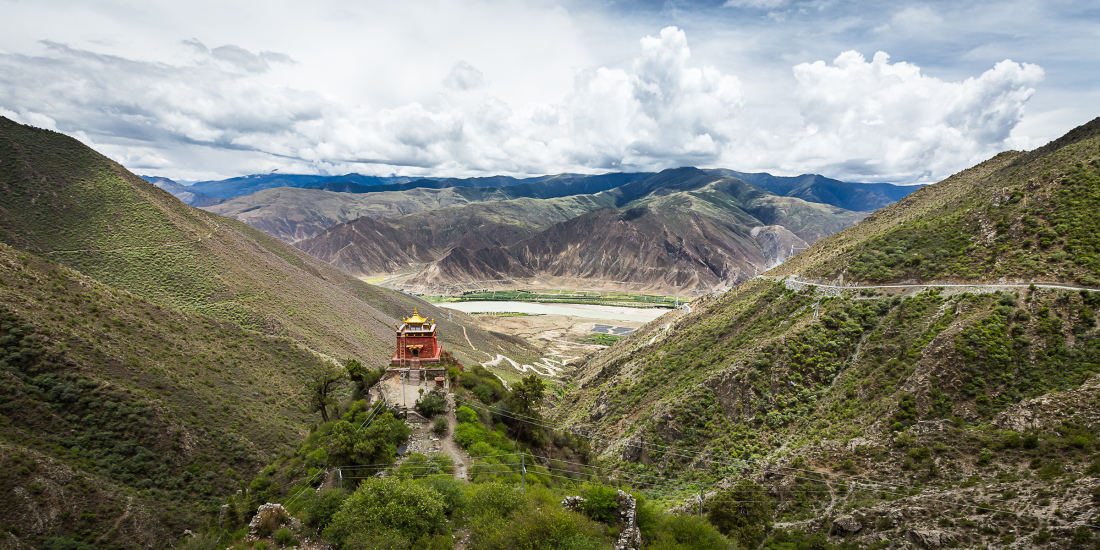
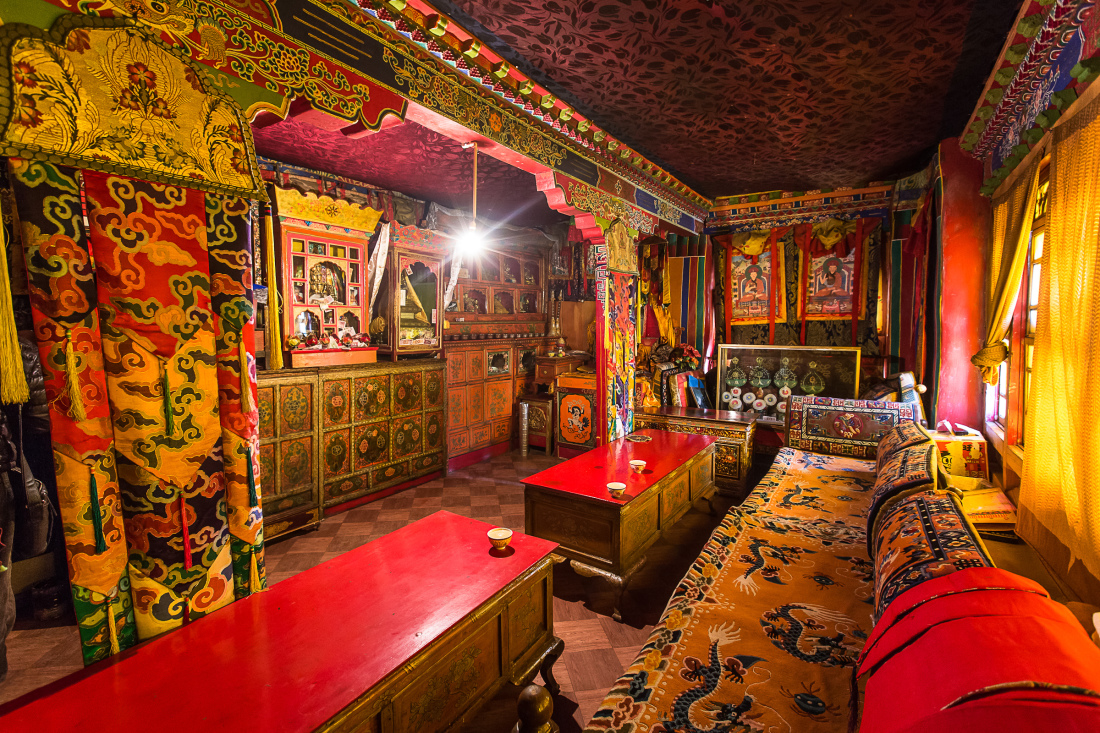
What were some of the highlights of the trip?
The main highlight of our trip for me was the level of interaction we had with the monks and nuns while we were there. We were invited to photograph these monasteries and nunneries by the head of the Drikung Kagyu lineage, with the intention of making a book to share with the rest of the world. When we arrived at these holy places, the monks and nuns knew this, and we were treated very differently. Instead of just being a tourist or a spiritual seeker, we were brought in to the guest areas for butter tea and conversation. Instead of getting teachings or surface-level tours from them, we talked (mostly listened) about the reality of their lives, and the reality of the current situation in Tibet. We spent hours in those guest rooms. … Learning about their daily lives made the experience of photographing the monasteries and nunneries infinitely more meaningful.
The other main highlight was the richness of beauty inside the monasteries and nunneries. Every aspect of everything was designed, sculpted and painted in a strikingly beautiful way. I’ve never experienced anything like that before… Combine that visual beauty with the sound of chanting and the smell of incense and burning butter candles … and combine that with the history of what has happened there and you get a depth of richness that is pretty much indescribable.
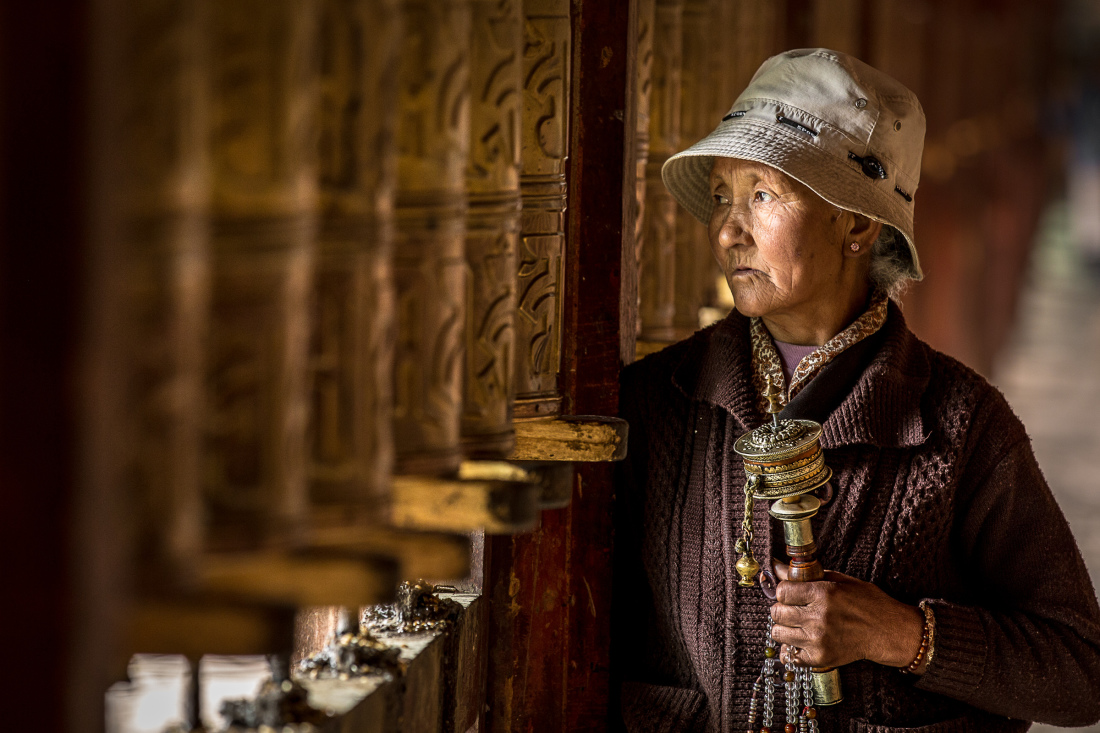
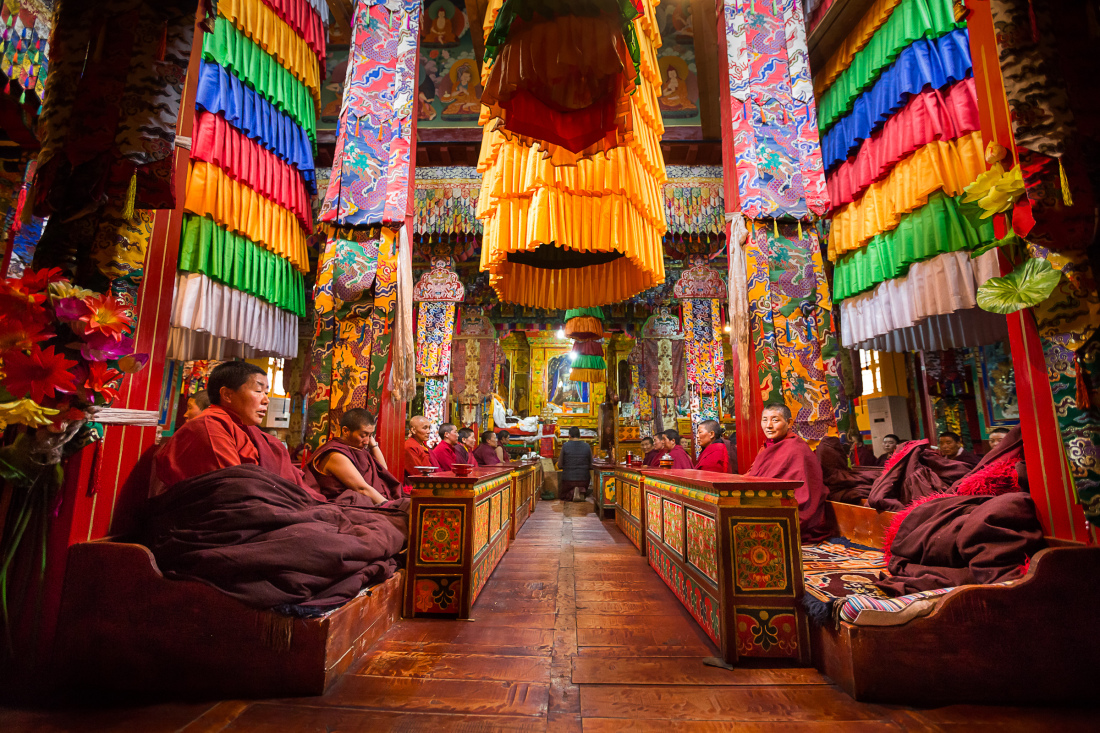
How did it feel to be one of the few photographers in the world to ever have been given permission to shoot in these areas?
It was an honor, and it was incredibly humbling. I remember being speechless inside the monasteries and nunneries a few times, feeling a deep sense of awe and gratitude mixed with the pressure of the reality that most humans would never be able to be in those places. I needed to get photographs that shared not only the beauty of the space, but the actual feeling of what it was like to be there. If people can truly get a glimpse of that feeling, even if it’s only in one of the photographs I took, I will feel like I did my job well.
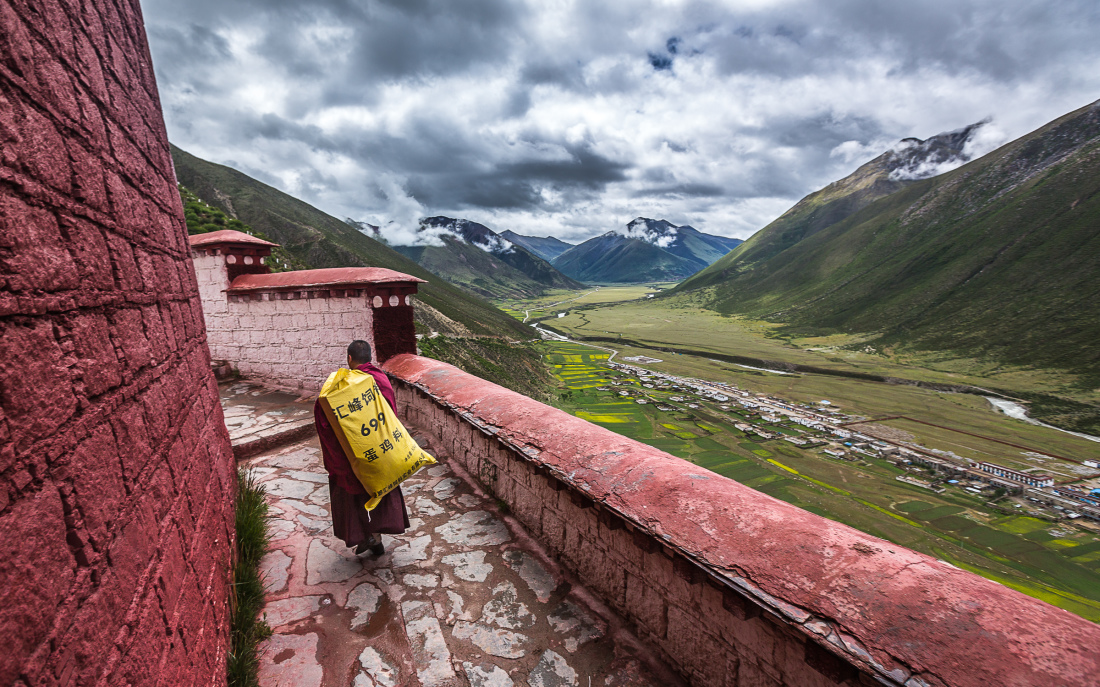
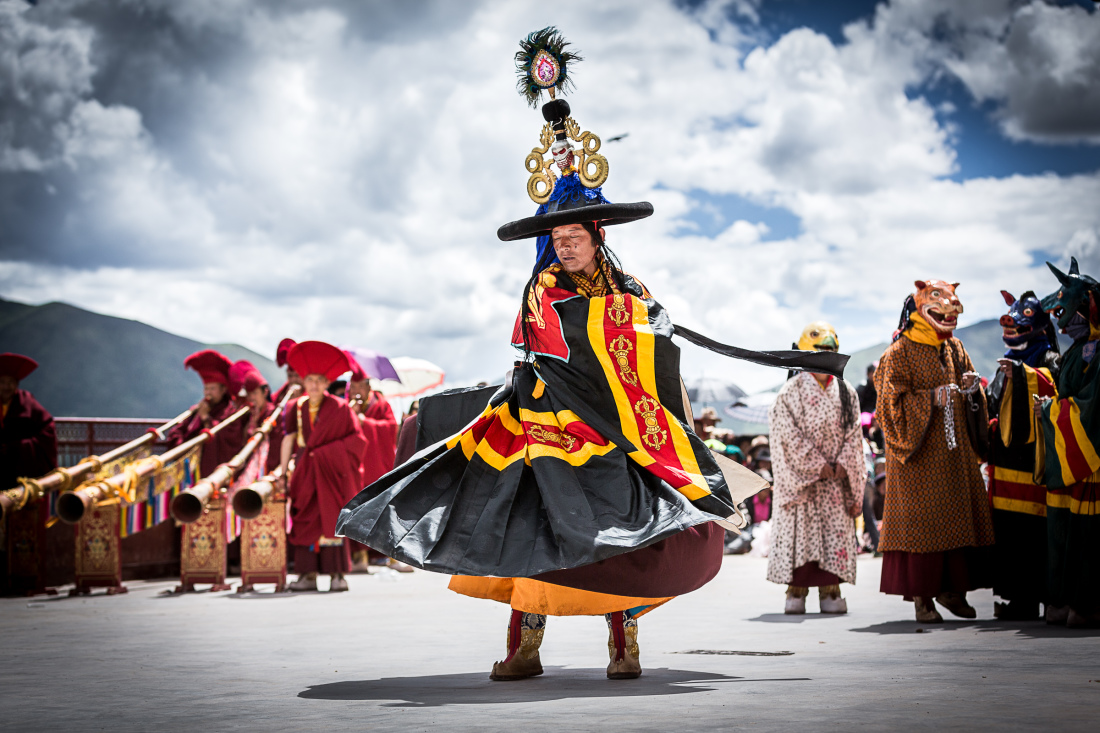
The opening exhibition for “Visions of Tibet” will be held Thursday, Dec. 4, at 7 p.m. at Urban Dharma (29 Page Avenue in downtown Asheville). At 8 p.m. photographer Taylor Taz Johnson will share stories about the experience. The exhibition will run from Dec. 4 through Feb. 15.



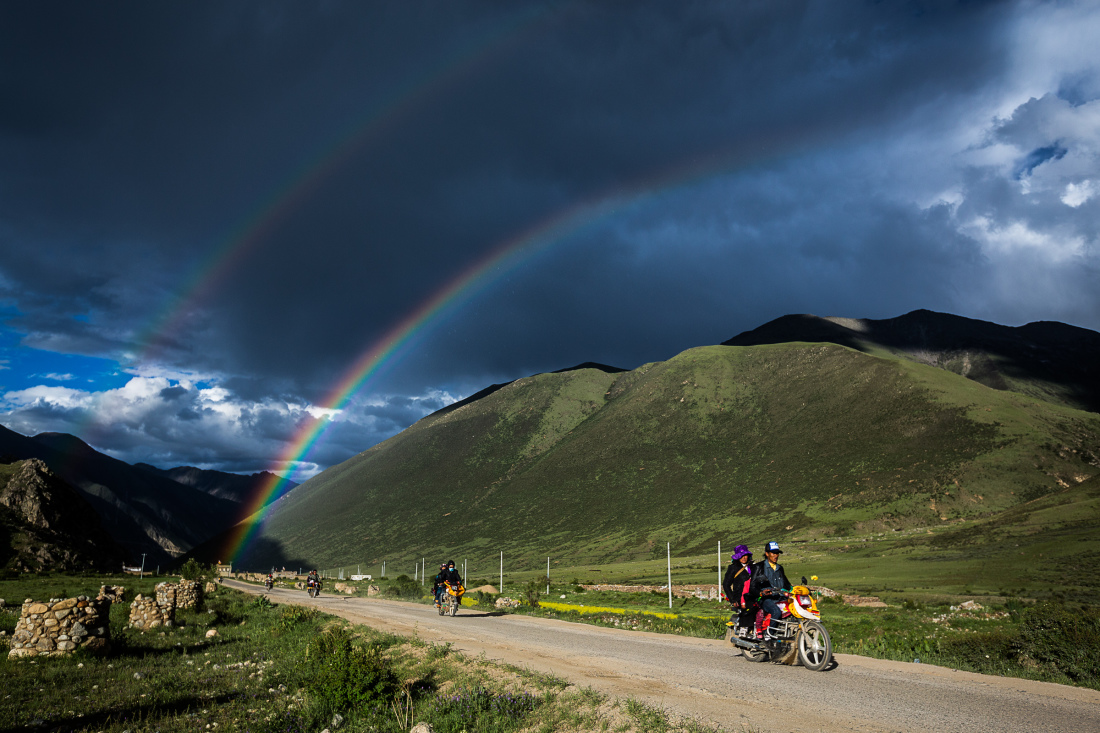


This is likely the most amazing thing I’ve ever seen on mx.com. Thanks.